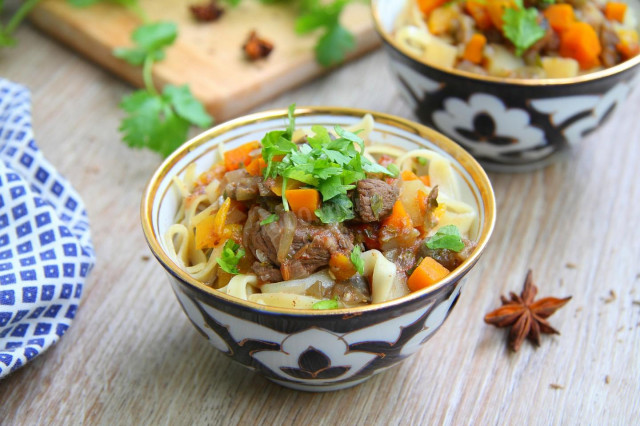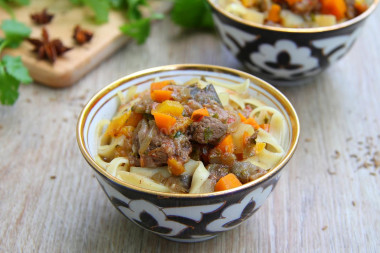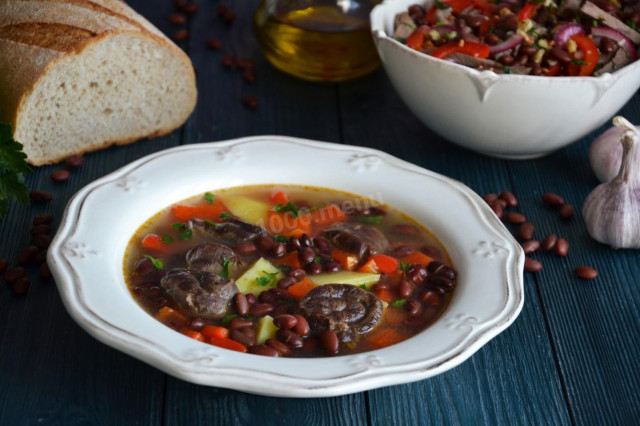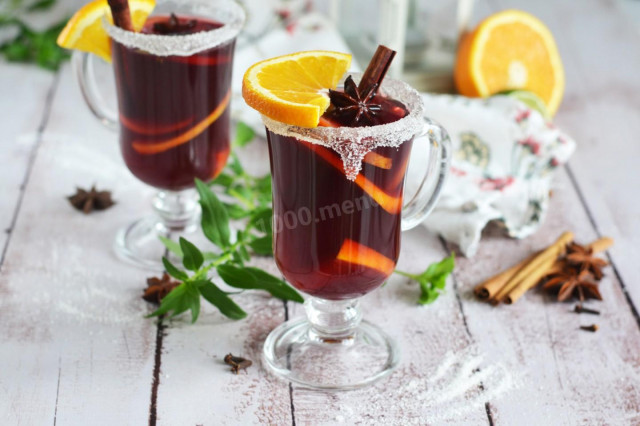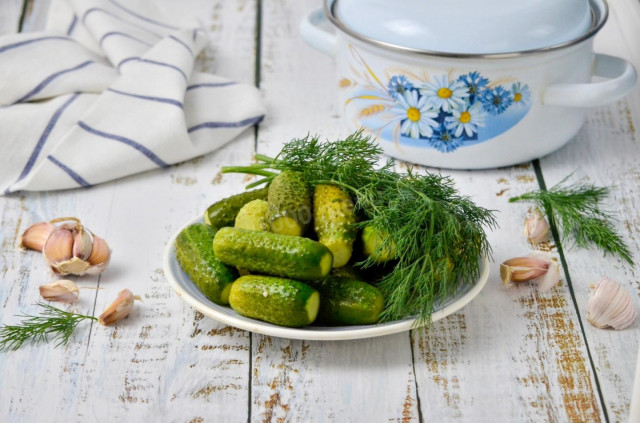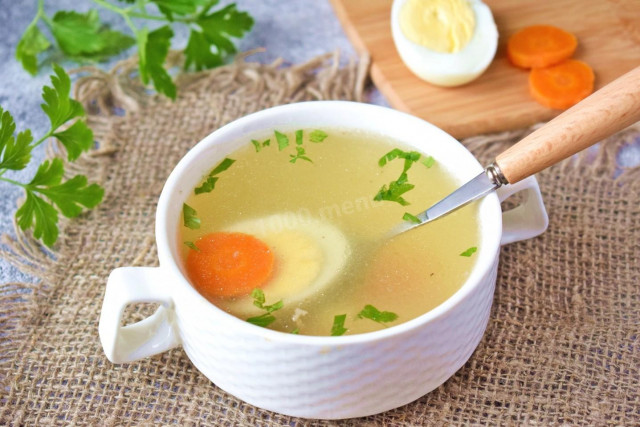Composition / ingredients
Step-by-step cooking
Step 1:
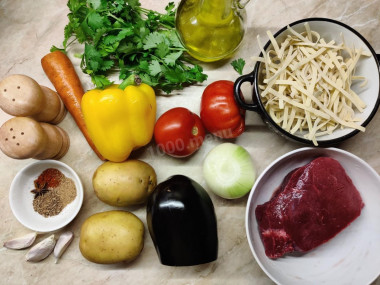
How to make fried lagman in Uzbek? Prepare the products. Beef can be replaced with veal or lamb. The more marbled meat you take, the juicier and softer it will turn out. Wash vegetables and meat under running water. I will use half of the eggplant to my taste. We will peel the tomatoes. Therefore, it is worth assessing in advance whether it will be removed easily or whether it will be necessary to pour boiling water over the tomatoes. It would be better to do this in advance.
Step 2:

Cut the beef into small portions. In a deep non-stick frying pan (or in a cauldron), heat the oil and fry the beef until golden brown over high heat.
Step 3:
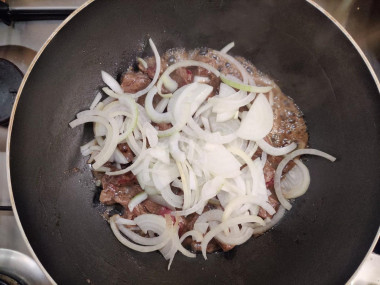
Reduce the heat to medium and add the onion cut into thin half rings. Both white and yellow onions are suitable. Fry until the onion is semi-transparent.
Step 4:

During this time, peel and cut the vegetables into small cubes: carrots, eggplant and bell pepper. I have yellow pepper, but both red and green will do.
Step 5:

Add the vegetables to the pan and stir. Simmer for another 5 minutes.
Step 6:
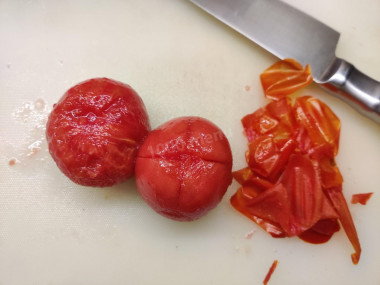
Peel the tomatoes. I have ripe summer tomatoes, so the peel is removed from them very easily. The absence of a tough tomato peel is always an additional bonus to the piggy bank of the tenderness of the finished dish.
Step 7:

Cut tomatoes into small cubes and add to the pan.
Step 8:

Pour in filtered water so that it covers all the ingredients. Everyone will have a different amount of water due to the different diameter and volume of dishes. Add spices: paprika, coriander, cumin and star of star anise. Simmer the dish over medium heat for about 10 minutes, stirring occasionally.
Step 9:

Peel the potatoes and cut into small cubes, add to the pan. Simmer for another 7 minutes until the potatoes are softened.
Step 10:
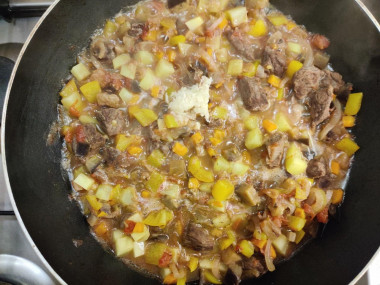
Grate the garlic on a fine grater and add it to the pan. By the way, the meat sauce that we are preparing now is called "Waju".
Step 11:
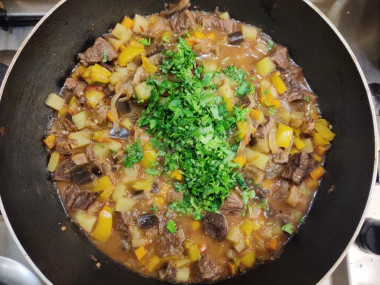
Then add some finely chopped parsley and cilantro. Leave some greens to serve. Simmer the dish for another 3 minutes until the greens change color. Add salt and pepper to taste and remove the waja from the heat. Cover with a lid. So it should be infused until the moment of submission.
Step 12:

Boil a liter of water for lagman. Add lagman to the water and cook it for one minute less than indicated on the package. It is better to cook noodles not all at once, but in portions for each meal. After all, fresh is always tastier.
Step 13:

Flip the lagman into a colander, let the water drain. And immediately put them on plates. First a portion of lagman, and then vaju sauce. Don't forget to add gravy to the dish if you like it. Decorate the lagman with fresh herbs.
Surprisingly, the combination of meat, potatoes, and noodles in one dish is absolutely not superfluous. For a long time of quenching, all these ingredients, together with spices, manage to unite into a single harmonious story.
Bon appetit!
If you use ready-made spice mixes, be sure to read the composition on the package. Often, salt is already present in such mixtures, take this into account, otherwise you risk over-salting the dish.
Important! An incorrectly selected frying pan can ruin even the best recipe. All the details on how to choose the perfect frying pan for different dishes read here .
Any oils are useful only until a certain temperature is reached - the point of smoking, at which the oil begins to burn and toxic substances, including carcinogens, are formed in it. How to determine the roasting temperature and choose the best oil for frying, and which is better not to use at all, read here .
Caloric content of the products possible in the composition of the dish
- Ripe potatoes - 80 kcal/100g
- Baked potatoes - 70 kcal/100g
- Mashed potatoes - 380 kcal/100g
- Boiled potatoes - 82 kcal/100g
- Potatoes in uniform - 74 kcal/100g
- Fried potatoes - 192 kcal/100g
- Tomatoes - 23 kcal/100g
- Melted beef fat - 871 kcal/100g
- Fat beef - 171 kcal/100g
- Lean beef - 158 kcal/100g
- Beef brisket - 217 kcal/100g
- Beef - okovalok - 380 kcal/100g
- Beef - lean roast - 200 kcal/100g
- Beef shoulder - 137 kcal/100g
- Beef - ribs - 233 kcal/100g
- Beef - ham - 104 kcal/100g
- Beef - tail - 184 kcal/100g
- Boiled ham - 269 kcal/100g
- Beef corned beef - 216 kcal/100g
- Sweet pepper - 27 kcal/100g
- Carrots - 33 kcal/100g
- Dried carrots - 275 kcal/100g
- Boiled carrots - 25 kcal/100g
- Eggplant - 24 kcal/100g
- Garlic - 143 kcal/100g
- Parsley greens - 45 kcal/100g
- Zira - 112 kcal/100g
- Vegetable oil - 873 kcal/100g
- Salt - 0 kcal/100g
- Noodles - 135 kcal/100g
- Onion - 41 kcal/100g
- Ground hot pepper - 21 kcal/100g
- Paprika - 289 kcal/100g
- Coriander greens - 25 kcal/100g
- Ground coriander - 25 kcal/100g
- Star anise - 337 kcal/100g

